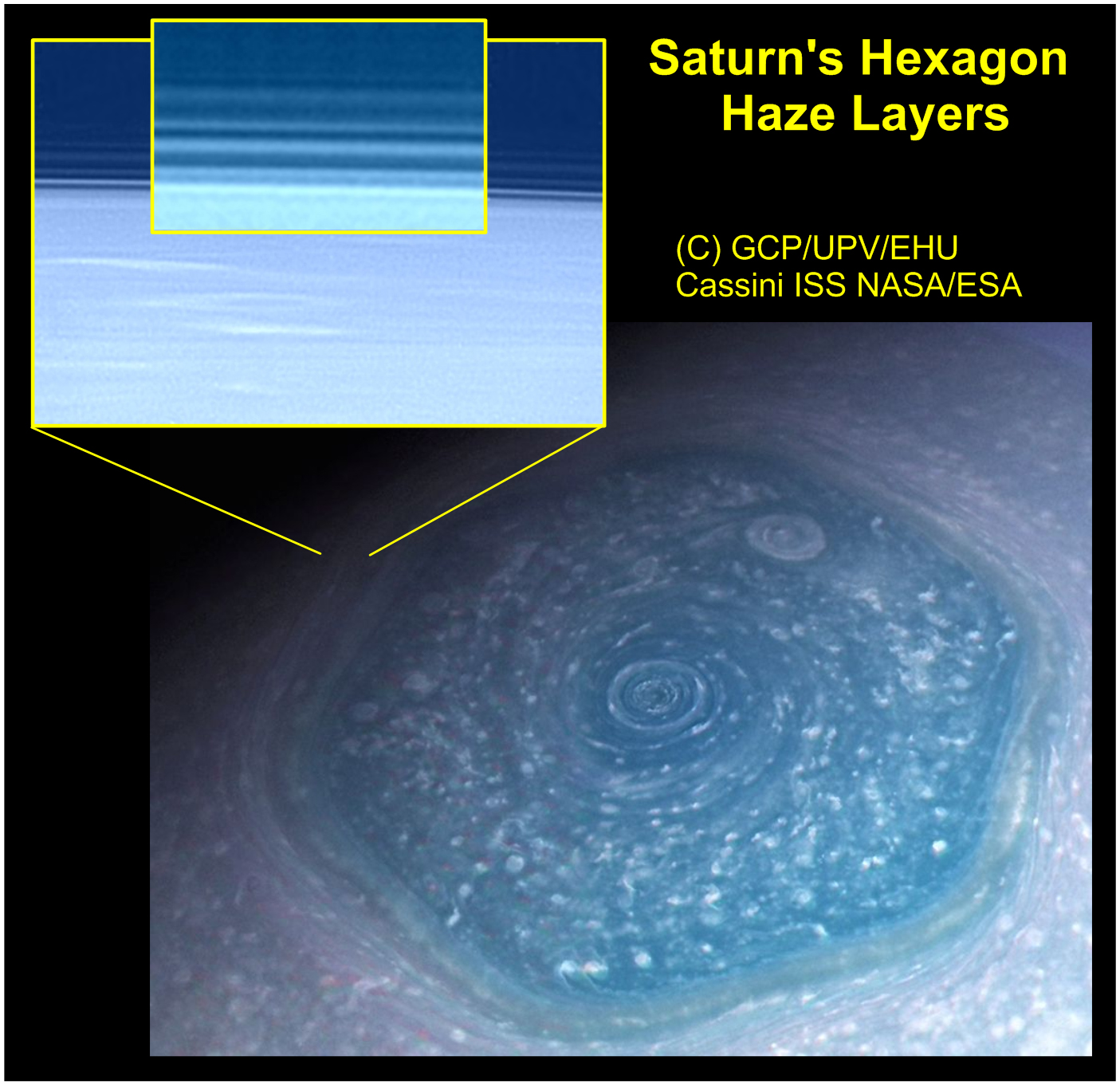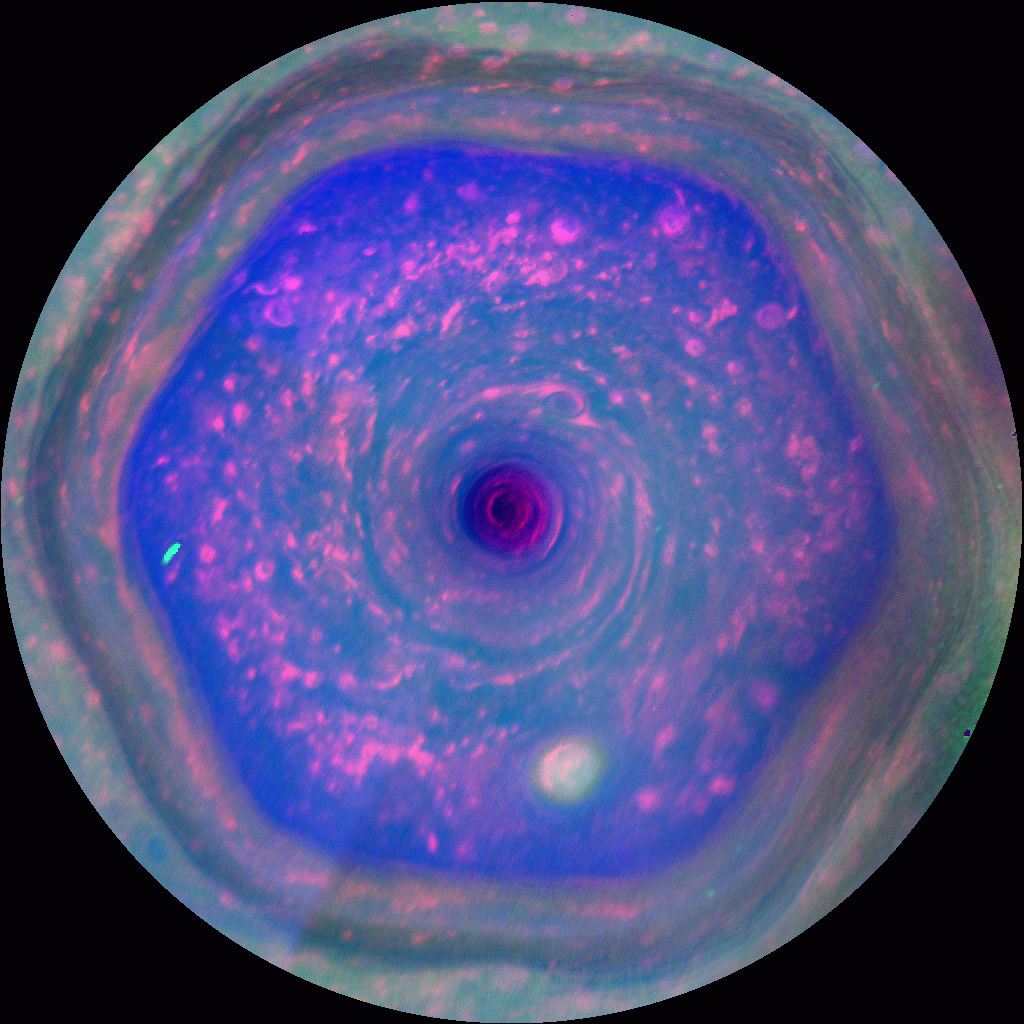What the cloud layers above Saturn’s hexagon are made of
Jupiter has its Great Red Spot – Saturn, in contrast, has its enormous hexagon. For a long time, a six-sided structure with a diameter of 29,000 km (18,000 miles) has been rotating around Saturn’s north pole. Thus, the hexagon is considerably larger than Jupiter’s spot, which is only 16,000 km (10,000 miles) across and more than twice as large as the whole Earth. The hexagon was first discovered in 1981 by Voyager 1 (photographed in infrared in the image below).
Starting in 2006, the Cassini probe, operated by NASA and ESA, made it possible to take a detailed look at the structure of the hexagon, which needs about ten hours and 39 minutes for one rotation. It appears to be clear that the hexagon is formed by jet streams moving at speeds greater than 300 km/h (186 mph). But how the unusual shape is created has not yet been completely explained. One cause might be that the wind speeds vary greatly depending on latitude. In laboratory simulations in a round water tank, regular polygons also formed when the liquid in the center rotated faster than at the edge.
But what is the hexagon’s structure in the vertical dimension? That is what researchers from the University of the Basque Country have now described in a paper. To do this, astronomers analyzed a large number of photos from Cassini. “The Cassini images made it possible for us to show that up to seven layers, which extend for up to 300 km (186 miles) above their base, form above the hexagon, similar to a sandwich,” says Professor Agustín Sánchez-Lavega, who led the study. Other icy worlds, like Titan and Pluto, also have such layers, but not in such a regular shape. Vertically, each layer is between 7 to 18 km (4.3 to 11.2 miles) thick. They contain particles on the order of magnitude of one micrometer. They appear to have an exotic chemical composition; due to the low temperatures between -120 and -180°C (-184 and -292°F), they consist of ice nuclei made out of hydrocarbons, such as acetylene, propane, and butane.
Why are the layers so regular? It might be due to the vertical propagation of gravity waves that generate oscillations in density and temperature in the atmosphere. This phenomenon has nothing to do with the gravitational waves of spacetime. Instead, it concerns an effect that is also observed on Earth and Venus. On Earth, they are generated at mid-latitudes by jet streams moving at 100 km/h (62 mph). They have also been observed on Venus at high latitudes.

